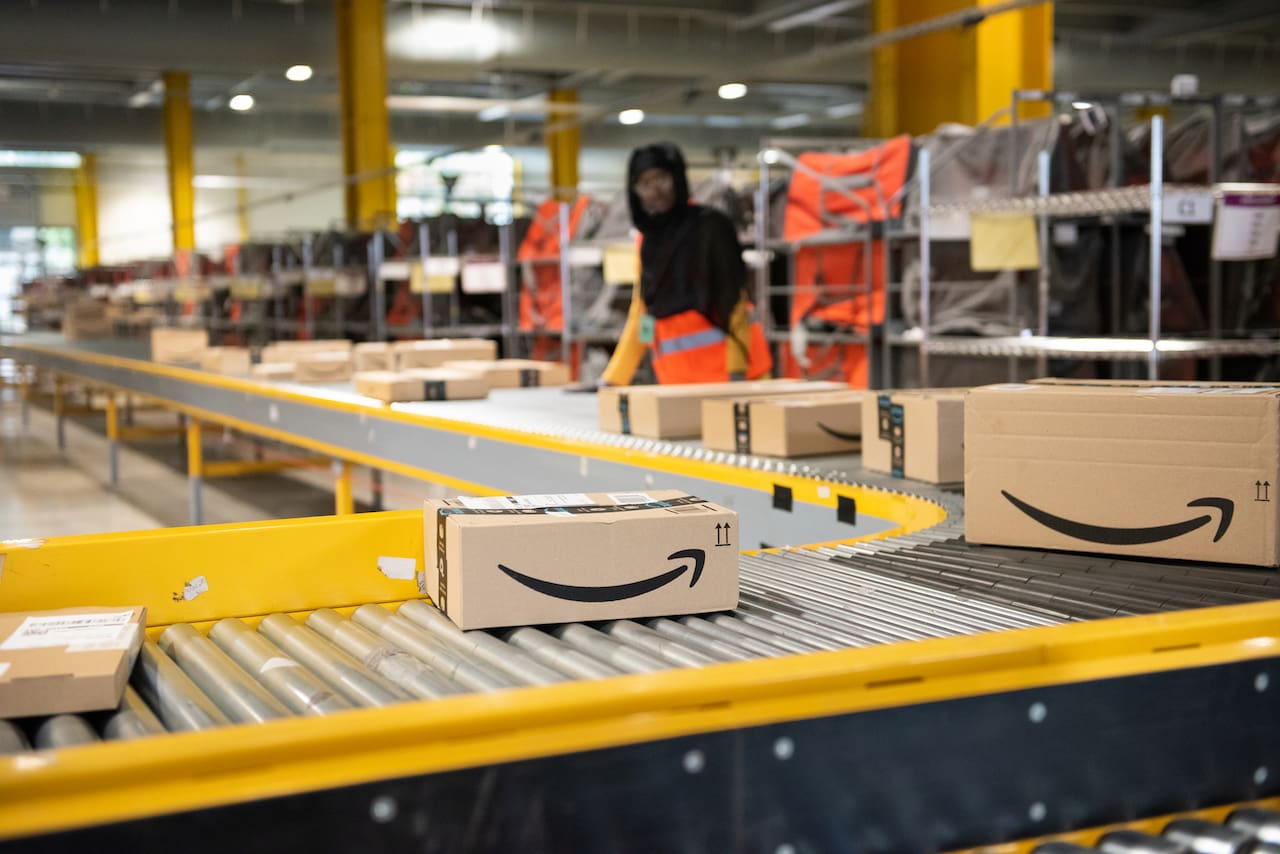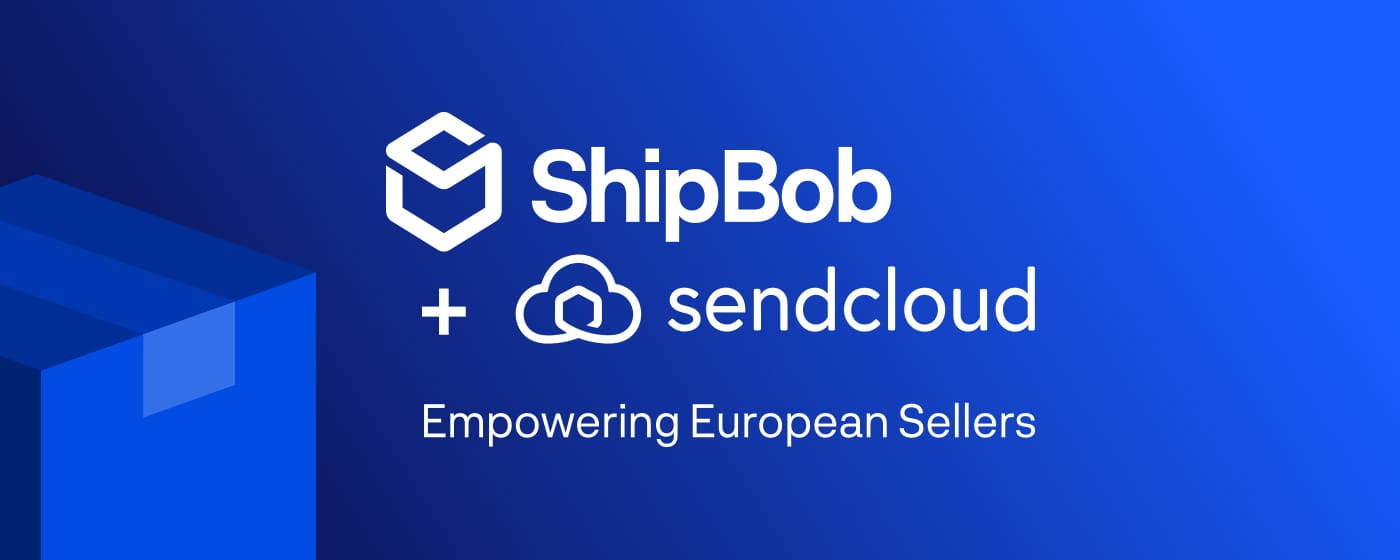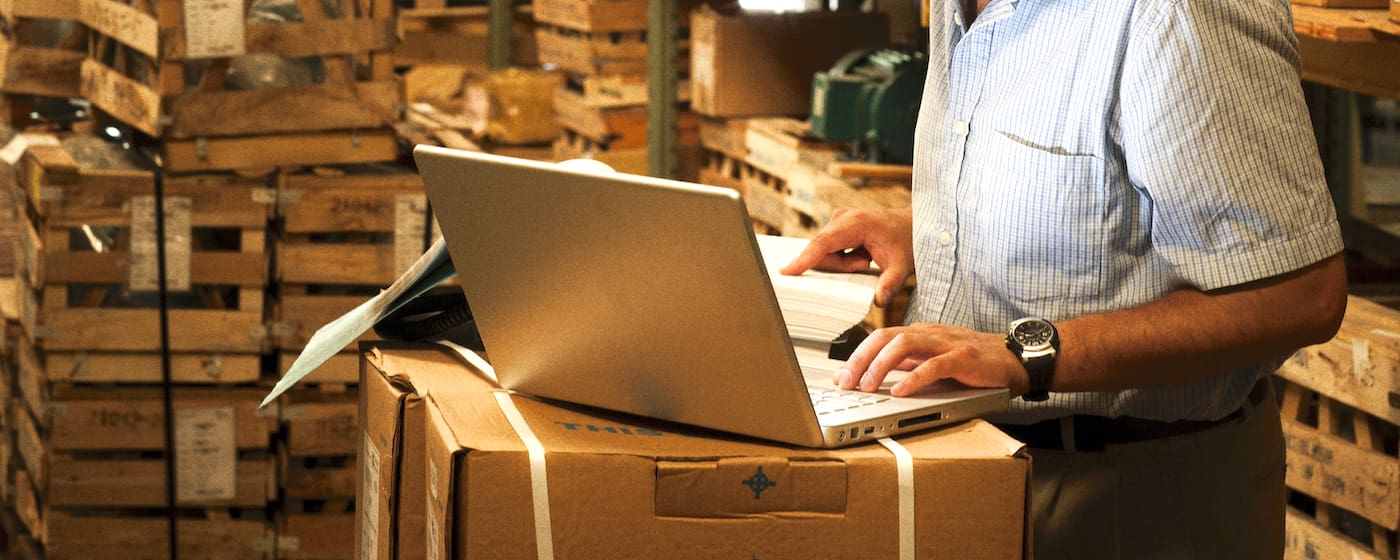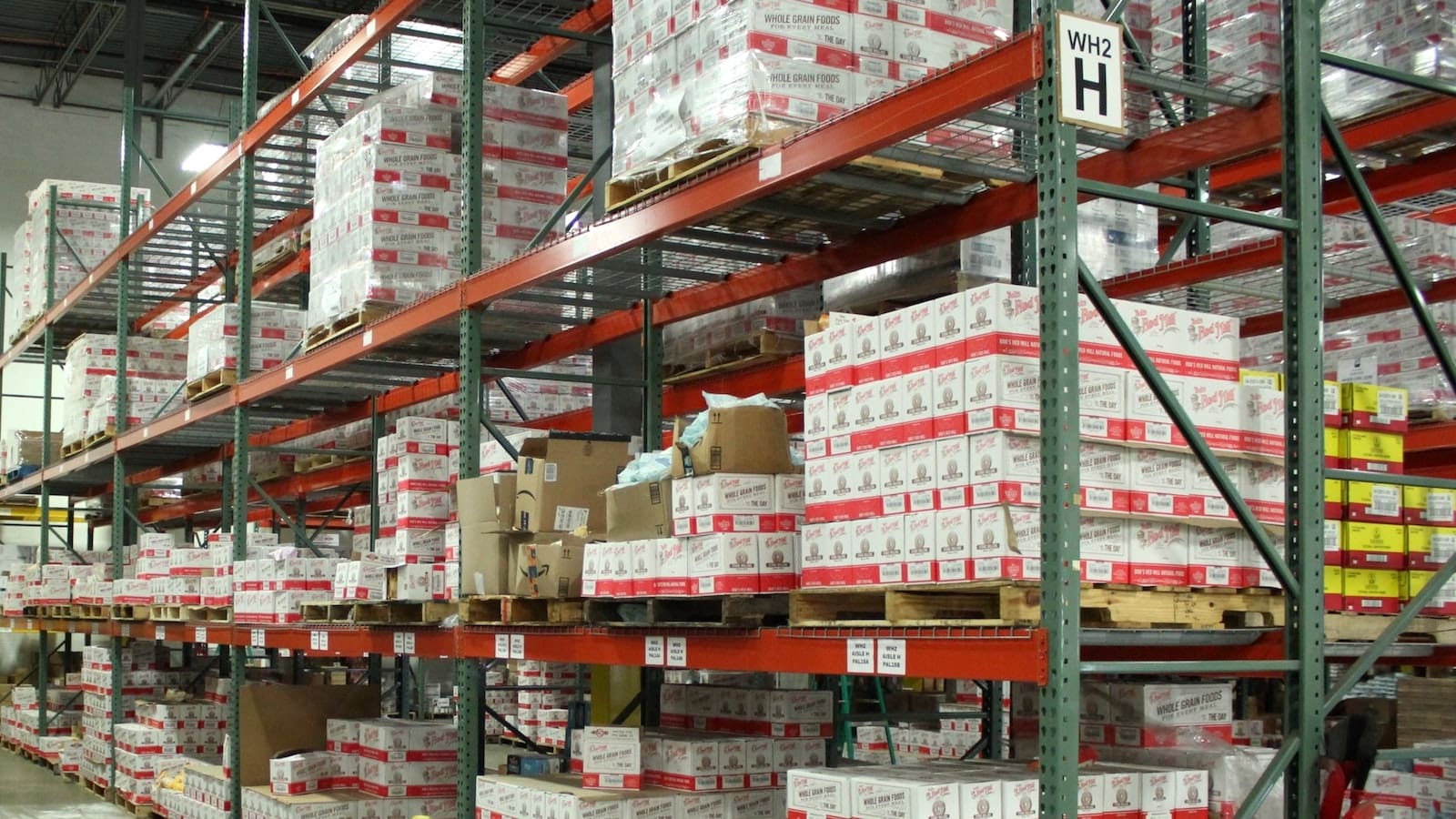Table of Contents
** Minutes
What is Amazon Direct Fulfillment?
Amazon Direct Fulfillment vs. Fulfilled by Amazon (FBA)
Amazon Direct Fulfillment Pros and Cons
Is Amazon Direct Fulfillment the same as dropshipping?
How can you get started with Direct Fulfillment?
Before the pandemic, many Amazon vendors were perfectly fine fulfilling customer orders through FBA (Fulfilled by Amazon).
But when COVID caused major delays in the supply chain that even affected Amazon, many Amazon vendors found that they needed to take matters into their own hands, and switch to their fallback option: Amazon Direct Fulfillment.
Whether it’s your go-to fulfillment solution or still just your backup plan, it’s important for Amazon vendors to understand the intricacies of the Amazon Direct Fulfillment program.
With a thorough knowledge of your Amazon fulfillment options and how they differ from one another, you can select the option that makes the most sense for your unique business.
In this article, we’ll dive into what Amazon Direct Fulfillment is; how it’s different from FBA, FBM, and dropshipping; and how you can get started with it with ShipBob’s help.
What is Amazon Direct Fulfillment?
Amazon Direct Fulfillment is a retail dropshipping program for Amazon vendors. When an order for a particular product is placed on Amazon.com, Amazon forwards that order to the vendor who provides that product. The vendor then ships the order directly to the end customers on Amazon’s behalf.
When a vendor chooses the Amazon Direct Fulfillment solution, Amazon purchases wholesale from a vendor, and takes care of marketing that vendor’s products, listing them online as products “Sold by Amazon.” Meanwhile, the vendor will ship individual orders directly to the customers instead of sending them in bulk to Amazon warehouses.
Amazon Direct Fulfillment vs. Fulfilled by Amazon (FBA)
When choosing between the different Amazon fulfillment programs, it’s important to clearly understand the differences between the two leading options: Amazon Direct Fulfillment and Fulfilled by Amazon (FBA). Here is a breakdown of the major differences between the two.
| Amazon Direct Fulfillment | Fulfilled by Amazon (FBA) | |
| Typically used by | Amazon Vendors (merchants that sell wholesale/B2B to Amazon) | Amazon Sellers (merchants that sell DTC via Amazon’s online marketplace) |
| Marketing & Product Listings | Amazon handles marketing and manages product listings. | Merchant handles marketing and manages product listings. |
| Supply Chain Management | Vendor manages their own supply chain (including manufacturers, receiving, warehousing, fulfillment, and shipping). | Amazon assists the merchant with managing their supply chain. |
| Inventory Management | Vendor stores and manages inventory | Amazon stores and manages inventory |
| Fulfillment and Shipping | Vendor fulfills orders | Amazon fulfills orders |
| Shipping | Vendor ships orders to customers, but Amazon pays for shipping | Amazon ships orders to customers, but the merchant pays for shipping |
“We currently use Fulfillment by Amazon (FBA) for our Amazon orders, but there are limitations.
We want to offer a custom experience for our customers and we can’t do that at a reasonable cost with Amazon. It’s difficult to have remarketing capabilities; There’s less flexibility, and everything has to be pre-packaged and pre-kitted.
The flexibility to offer various combinations of products to our customers that we don’t get on Amazon has been really beneficial through ShipBob.
This way, our customers can get various combinations of our products that best fit into their lifestyle. ShipBob has also worked with us to develop technical capabilities so we can have any combination of our product offerings placed into our variously sized custom branded boxes.”
Pablo Gabatto, Business Operations Manager at Ample Foods
What about Amazon Fulfilled by Merchant (FBM)?
Fulfilled by Merchant (FBM) is another fulfillment option offered by Amazon. This option gives a merchant the most control over their business, as an Amazon seller that uses FBM is responsible for all of their own operations, including:
- Marketing their products on Amazon.com
- Managing product listings on Amazon
- Inventory storage
- Fulfillment
- Shipping
- Returns
- Customer service
Even though Amazon Direct Fulfillment also requires a seller to fulfill and ship their own orders, Amazon Direct Fulfillment and FBM are not the same thing.
While FBM merchants typically use Amazon’s marketplace as a means to sell direct to consumer, or DTC, Amazon Direct Fulfillment vendors usually sell their products wholesale to Amazon.
Amazon owns the products, but saves the vendor the hassle of distributing inventory to Amazon’s warehouses by allowing the vendor to pack and ship orders to customers — which Amazon pays for.
In the FBM model, on the other hand, the merchant owns their inventory, but is solely responsible for fulfilling and shipping orders, and for the associated costs.
Amazon Direct Fulfillment Pros and Cons
There are many upsides and downsides to Amazon Direct Fulfillment. Before committing to the strategy, you will want to carefully balance the pros with the cons, and determine the must-haves for your business.
Amazon Direct Fulfillment pros
Amazon handles customer service
With Amazon Direct Fulfillment, you get access to Amazon’s customer service. This saves you the trouble of having to manage your own customer support team on top of managing other aspects of your business.
Amazon covers your shipping costs
Amazon takes care of all the shipping fees you incur when fulfilling orders through Amazon Direct Fulfillment. The only costs the vendor is responsible for are fulfillment labor costs and packing materials.
Improved quality control
When you’re managing fulfillment yourself, you get to decide how the items are shipped so as to avoid damage in transit. This gives you more control over quality and customer experience.
Increased sales opportunities
With Amazon Direct Fulfillment, you can leverage your entire catalog without having to rely on Amazon’s capacity to stock all of your products. This gives you a wider SKU range to sell, and subsequently the opportunity to increase your sales.
Lower risk of stockouts
Using Amazon Direct Fulfillment, you won’t spend time and resources moving your inventory from your own warehouse or storage facility to an Amazon fulfillment center or distribution center.
Reducing in-transit time lowers the chance that you’ll experience stockouts that could eventually harm your product’s ranking in Amazon searches.
Streamlined shipping
Shipping directly to the customer from your warehouse (rather than shipping to an Amazon facility, and then to the customer) streamlines the transportation process, and minimizes the risk of supply chain complications, such as delays or accidents.
Amazon Direct Fulfillment cons
More work for sellers
Amazon Direct Fulfillment does involve more work for sellers than the FBA program, as Amazon Direct Fulfillment requires a vendor to fulfill and ship orders themselves.
Consider carefully whether you have the workforce and resources to efficiently handle storage, picking, packing, and shipping on top of managing your inventory and/or other channels you may sell through.
Lower visibility in Amazon searches
Amazon tends to prioritize FBA listings in search results. Subsequently, you may experience a lower rank in Amazon searches when there are multiple sellers offering the same product you sell.
“Most other companies like Amazon are structured in such a way that you don’t have flexibility — you’re just a small part of their business, so there’s no patience for you.
The amazing thing about ShipBob has not just been its flexibility and ability to customize, but also the support it’s given us whenever we’ve faced problems. Having support through ShipBob has really allowed us to capture growth well.”
Aaron Patterson, COO of The Adventure Challenge
Is Amazon Direct Fulfillment the same as dropshipping?
Amazon Direct Fulfillment is a form of retail dropshipping: a fulfillment strategy in which merchants or vendors fulfill and ship orders directly to customers on behalf of a retailer, such as Target (or, in this case, Amazon). In this case, the terms “direct fulfillment” and “retail dropshipping” may be used interchangeably.
However, neither should be confused with traditional dropshipping, which is different. In the traditional dropshipping model, a DTC seller forwards orders placed on their ecommerce store to their manufacturer or supplier, and the manufacturer or supplier then packs and ships each order to the end customer.
How can you get started with Direct Fulfillment?
The process of getting started with Direct Fulfillment is easy, with minimal startup investment and quick onboarding. For existing Amazon vendors, all you need to do is send a request from your Vendor Portal to access Drop Ship Central and Direct Fulfillment.
If you’re not an existing vendor, here are the steps to get set up:
- While getting your Vendor Central account set up, inform your onboarding contact to check the “DF” (“Direct Fulfillment”) box.
- During the setup process, you’ll receive an invitation to enroll in the Drop Ship Central portal, from which you can manage your Direct Fulfillment orders.
- Select your choice of shipping label (your own shipping label vs. Amazon’s). You’ll also need to provide details such as your warehouse information, hours of operations, closure schedules, and carrier pick-up times.
- Within the next two days, Amazon will provide you with instructions on how to upload your inventory feed information to your Drop Ship Central portal. Once that’s uploaded, you’ll be able to start using Amazon Direct Fulfillment.
What ShipBob can do for Amazon sellers
ShipBob offers comprehensive fulfillment solutions for Amazon sellers, regardless of the fulfillment program they use.
Outsourced fulfillment for FBM orders (and other sales channels)
As an omnichannel logistics platform, ShipBob can fulfill FBM orders from Amazon, as well as orders from your other DTC and B2B channels.
ShipBob’s software will integrate directly with Amazon and other retailers’ platforms so that every order is automatically processed and sent to the ShipBob fulfillment center closest to the order’s destination. From there, each order is picked, packed, and shipped to the end customer, without you having to do it yourself.
ShipBob’s platform also offers real-time visibility into inventory levels across your channels to improve your multichannel inventory management. Through your merchant dashboard, you can pull analytics for every channel, set reorder notifications to time replenishment correctly, and even determine which of our dozens of global fulfillment centers are the most strategic locations to store inventory in.
“In contrast to working in the Amazon fulfillment dashboard, which looks like a Bloomberg terminal upon opening it, the ShipBob dashboard is awesome and extremely user-friendly.”
Steve Staffan, founder and CEO of Brummell
B2B and EDI-compliant fulfillment
ShipBob offers B2B fulfillment solutions for Amazon FBA sellers that ship inventory to Amazon in bulk. This allows you to outsource some of the most complicated and critical aspects of selling on Amazon, and helps ensure that Amazon has enough inventory to fulfill on your behalf.
ShipBob’s B2B services are fully EDI (Electronic Data Interchange) compliant through leading partners such as SPS Commerce, so that merchants can navigate retailer requirements with accuracy and ease.
Fulfillment for Amazon dropship orders
ShipBob also supports vendors who need to fulfill Amazon Direct Fulfillment orders.
To streamline the process, these orders are ingested into ShipBob’s dashboard via integrated EDI providers — so as soon as Amazon sends a retail dropship order to you, ShipBob can fulfill it on your behalf using our distributed fulfillment network.
This minimizes an Amazon Direct Fulfillment vendor’s workload, and lets you delegate the most consuming and confusing parts of retail dropshipping to the experts.
While Amazon manages the product listing, ShipBob manages the fulfillment aspect of your Amazon dropship orders. This is particularly useful for vendors who don’t have the resources, facilities, or workforce necessary to manage Amazon Direct Fulfillment.
Interested in exploring how ShipBob can help you fulfill your Amazon orders? Click the button below to request a quote.
Amazon Direct Fulfillment FAQs
Here are answers to the common questions about Amazon Direct Fulfillment.
What is Amazon Direct Fulfillment?
Amazon Direct Fulfillment is a direct fulfillment program in which Amazon transfers individual orders to vendors, who then ship the orders directly to the customers. Amazon manages the listings while the vendor picks, packs, and ships the orders on Amazon’s behalf.
How do I get started with Amazon Direct Fulfillment?
You can get started with Amazon Direct Fulfillment by requesting access to Drop Ship Central and Direct Fulfillment if you’re an existing vendor.
If you’re not an existing vendor, you can opt into the program during the Vendor Central setup process. Once you have access, you’ll need to upload your inventory feed information to your Drop Ship Central portal.
Does ShipBob Integrate with Amazon?
Yes! ShipBob directly integrates with your Amazon store so you can seamlessly fulfill different types of Amazon orders.



